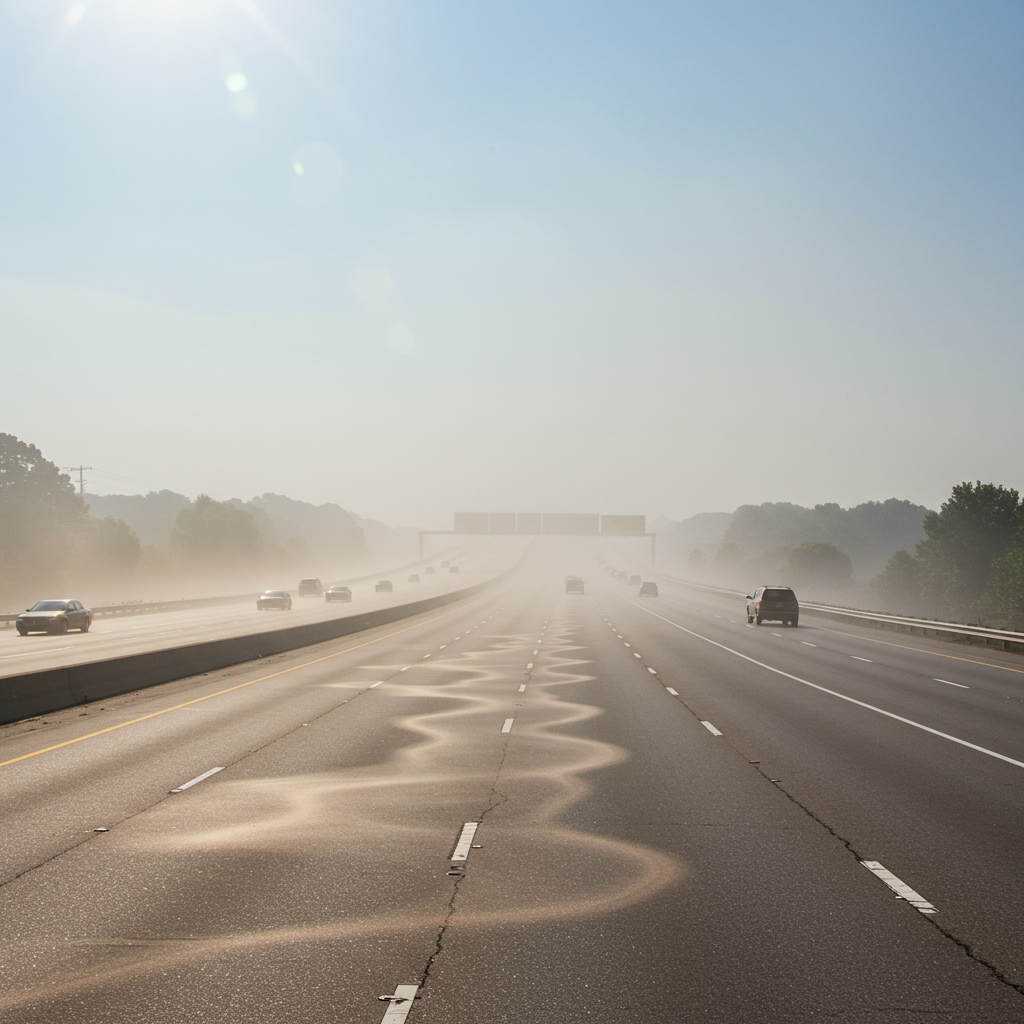A historic and life-threatening heat wave is scorching the eastern United States, engulfing regions from the Midwest and Ohio Valley all the way to the East Coast, including the entire Interstate 95 corridor. With over 160 million Americans under heat alerts, including approximately 75 million facing the highest level of extreme heat warnings, this event is one of the most widespread on record, marking the first major heat wave of the season.
Tuesday stood out as the peak day for the most intense heat across the Northeast, with temperatures soaring 15-25 degrees Fahrenheit above average in many areas. The combination of blistering heat and oppressive humidity pushed “feels-like” temperatures, or the heat index, well into the triple digits in numerous locations, nearing or exceeding 110 degrees Fahrenheit in some areas of the Carolinas and Virginia earlier in the week, and expected to range from 100 to 110 degrees across the Midwest and East Coast.
Cities Experience Historic Heat
The severe heat wave delivered on forecasts of record-breaking temperatures, particularly across the Northeast. Numerous major cities not only saw their hottest temperatures of the year but shattered long-standing June records on Tuesday:
Boston, Massachusetts: Hit a sweltering 102 degrees Fahrenheit, surpassing its previous all-time June high of 100 degrees (last set in 2021, 1952, and 1925).
Providence, Rhode Island: Reached 100 degrees, breaking its prior all-time June record of 98 degrees (last hit in 1945).
Newark, New Jersey: Tied its hottest temperature ever recorded in June, reaching 103 degrees. This also broke the daily record for the date.
New York City: While the official Central Park reading of 99 degrees wasn’t a June record, it marked the city’s hottest temperature since July 2012. Crucially, both JFK Airport (102 degrees) and LaGuardia Airport (101 degrees) set new record highs for the date, with JFK hitting its hottest June temperature on record.
Philadelphia, Pennsylvania: Reached 100 degrees on Tuesday, the first time hitting that mark in the city since 2012. Philadelphia International Airport recorded 101 degrees, setting a new daily record for the date and marking the second-hottest temperature there since records began in 1873.
Baltimore City, Maryland: Soared to 105 degrees, smashing its daily record of 101 degrees from 2010.
Poughkeepsie, New York: Reached 100 degrees, breaking its daily record and marking the first time hitting triple digits there since 2011.
Plattsburgh, New York: Tied its all-time record high of 101 degrees, only the fourth time the city has reached 100 degrees in nearly 80 years.
Raleigh, North Carolina: Broke its daily record on Monday, hitting 100 degrees.
Even areas further north saw unusual heat, with parts of Maine reaching the 90s – very uncommon for June. The heat wave’s strength is partly attributed to a robust “heat dome,” a high-pressure system trapping heat and humidity below, causing stagnant air and intense temperatures.
Serious Health Risks and Impacts
This kind of intense, long-duration heat, compounded by little overnight recovery (with some major cities like NYC, Newark, and Philadelphia failing to drop below 80 degrees), is particularly dangerous. The human body hasn’t yet acclimatized to such warmth, making people especially vulnerable to heat-related illnesses like heat exhaustion and potentially deadly heat stroke. Authorities are urging extreme caution, as experts highlight that heat is the leading cause of weather-related deaths.
Tragically, at least one death in St. Ann, Missouri, has been attributed to the heat. The extreme conditions also caused 16 hospitalizations and required treatment for 150 others due to heat exhaustion at a high school graduation ceremony in Paterson, New Jersey, forcing events to be rescheduled.
The heat wave is also stressing infrastructure. Utility companies like Con Edison in New York City have urged customers to conserve energy, particularly during peak hours, by setting air conditioning higher (e.g., 76 degrees) and avoiding the use of intensive appliances like washers, dryers, and microwaves. The massive demand for cooling placed significant pressure on power grids like PJM Interconnection, with electricity demand reaching decade-high levels and resulting in tens of thousands of power outages across several states.
Transportation has also been affected, with Amtrak implementing heat-related speed restrictions in the Northeast when track temperatures exceed 128 degrees, potentially causing delays. Tourist sites, such as the Washington Monument, have closed due to the conditions, and construction firms are taking extra precautions for outdoor workers.
When Relief Arrives
While Tuesday represented the peak heat for many areas, high temperatures were expected to persist through Wednesday in some locations, with Washington D.C. and Philadelphia potentially seeing additional record highs.
Significant relief is anticipated starting on Thursday as the heat dome begins to break down. Temperatures are forecasted to drop considerably across the affected regions, bringing much-needed respite from the oppressive conditions.
Staying Safe in Extreme Heat
Officials across the East Coast and beyond are emphasizing the critical importance of heat safety during this dangerous period. Key recommendations include:
Stay Indoors: Seek air-conditioned environments whenever possible.
Stay Hydrated: Drink plenty of water throughout the day, don’t wait until you feel thirsty. Avoid sugary drinks, alcohol, and caffeine.
Dress Appropriately: Wear lightweight, loose-fitting, light-colored clothing.
Limit Outdoor Activity: Avoid strenuous activities, especially during the hottest parts of the day. If you must be outside, take frequent breaks in the shade or a cool place.
Check on Vulnerable Individuals: Ensure elderly neighbors, relatives, and those with pre-existing health conditions have access to cooling and hydration.
Never Leave Children or Pets in Cars: Temperatures can rise rapidly, creating a deadly environment.
Recognize Heat Illness Symptoms: Be aware of signs like muscle cramps, heavy sweating, dizziness, headaches, weakness, or nausea. Seek medical attention if symptoms are severe or do not improve.
This extreme heat event underscores concerns about how human-caused climate change may contribute to making such dangerous heat waves more frequent, intense, and prolonged in the future. Staying informed and taking precautions is essential to navigating these challenging conditions safely.




